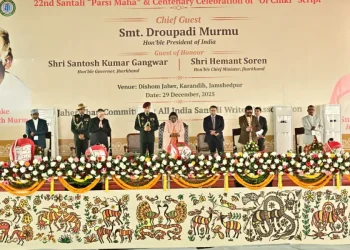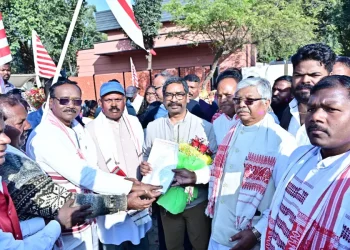Vibrant and diverse – two words that truly define the tribal population of Chhattisgarh. If I were to add two more words, they would be: proud and protective. A well-known fact is that more than a third of the young state’s population is tribal. A closer look, and you will know most have shunned urban life, preferring to stay closer to their roots – and those of the trees they worship. Nature is a way of life for the people here. It’ is there in their culture and tradition, bound tightly by folklore. That is what makes Chhattisgarh.
Know more about the known and lesser-known culture, traditions and other aspects.
Nature Deity
Devgudi: In the remote jungles of tribal-dominated Bastar, dotted with more than 12,000 villages, Devgudi is the place where people go, for solace and worshipping ‘Sarna’ or Sal tree. Devgudis are open spaces, largely marked by a fence. Mahua and its flower are offered here, along with prayers, big and small. The Sirha, or the priest, presides over matters and facilitates things. For the Muria, Madia and Gond communities, a visit to Devgudi is special. There are wishes, and some special ones. It is similar for the Oraon and Kanwar tribes of the northern Surguja region, who hold Sarna puja close to their hearts. The difference: the Sarna tree is unguarded, on the outskirts of the village. However, these tribal are contemplating to guard the tree due rampant encroachments by villagers in forest land.
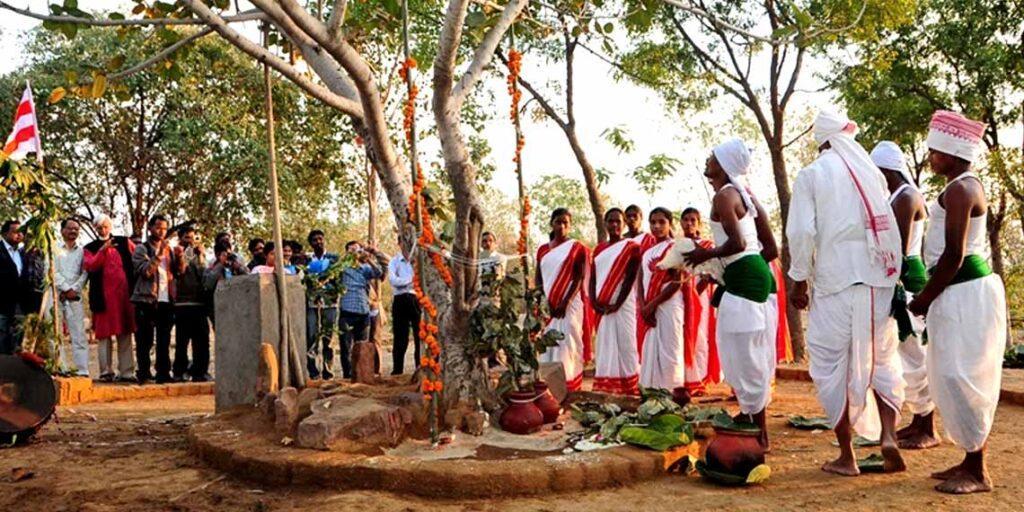
The importance of Devgudis is not lost on the state government. Chhattisgarh Tribal Welfare Secretary DD Singh says the government has made provisions in the budget to take care of Devgudis, many of which are not in good shape. Renovation work is being done. It does not cost much as the Devgudis are open spaces, with no shed.
Karma and Sarhul festivals
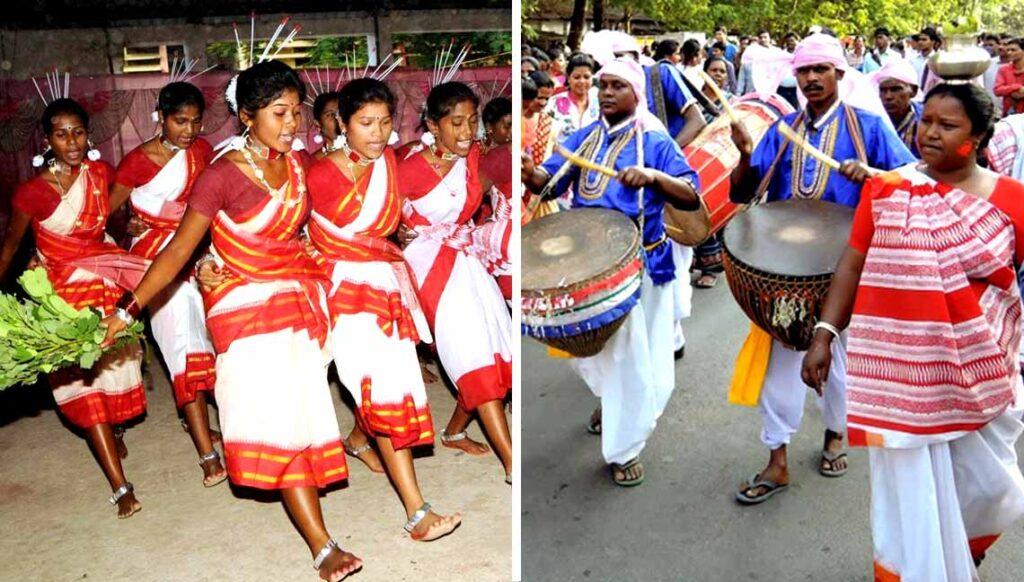
For the Surguja tribes – Oram, Gond and Kanwar communities – these are the festivals they look forward to. The popular folklore surrounding Karma Puja is that a karam plant protected a tribal king Rohit of Rohtasgarh when he worshipped it in a deep jungle. He hid in its bush to protect himself from his enemies. Not only did he survive, he also got his kingdom back. He got it back because he worshipped the plant — that is the belief.
Deputy Diwan of Pada Padha, a social body of tribal community, K.N. Ram said this folk tale also inculcates the morals and values and is treated as epics of Ramayan and Mahabharat. “The values of ‘Karma’ are also taught in the folklore,” he pointed out.
The date of the Karma festival, interestingly, is not fixed. It is announced by the local priest or ‘baiga’ when the time is right. Different villages celebrate it on different dates. Mahua and Sarai flowers play important role in the Puja.
Sarhul, on the other hand, is a harvest festival. Prayers are offered for prosperity and Sarna Puja is performed.
Bastar Dussehra
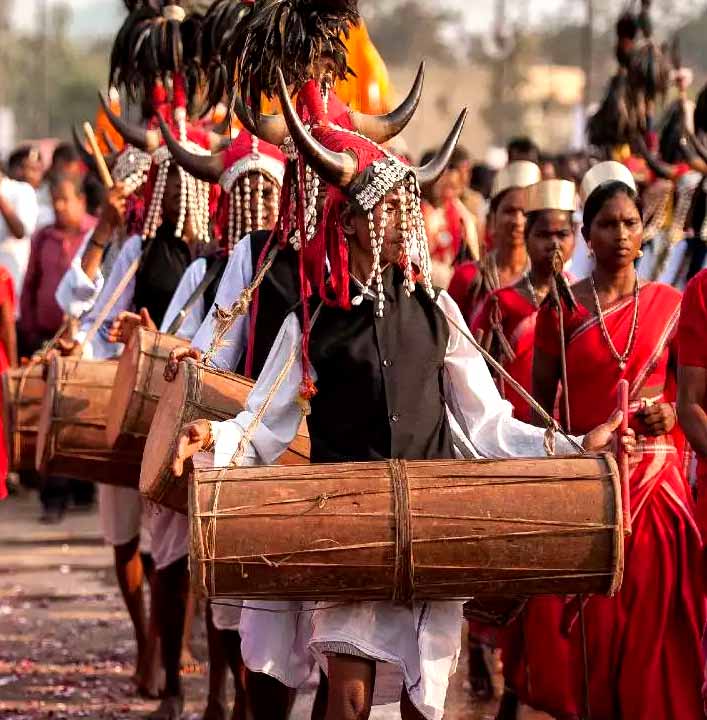
Nature apart, many of the communities of Bastar celebrate the Dussehra festival, which is different from the rest of the country. Bastar Dussehra celebrates Goddess Danteswari, the deity of all tribes of Chhattisgarh. A palanquin procession is taken out from the Dantewada temple to mark the festival. It ends with Muria Darbar on the tenth day of the festival.
Goncha festival
An influence of the Bhanj Deo dynasty, which ruled Bastar until 1966, the Goncha festival is essentially about Rath Yatra – neighbouring Odisha’s most important religious festival – in which a chariot procession of Lord Jagannath, Balabhadra and Subhadra is taken out from divisional headquarters Jagdalpur.
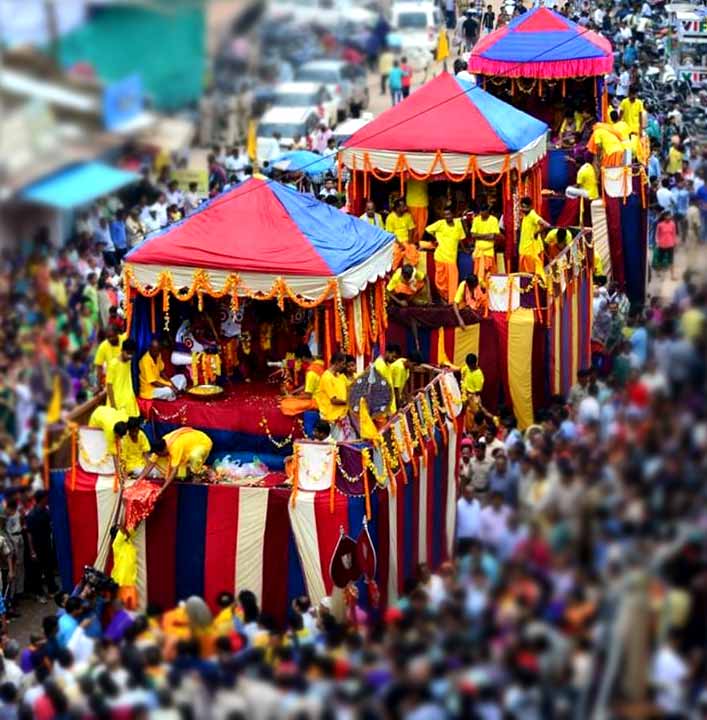
The Bhanj Deo dynasty, whose rule ended with the popular king Praveer Chandra Bhanj Deo being killed in a police firing, brought the festival centuries ago. Communities in Bastar celebrate the occasion largely because of the popularity of the last king. The tradition continues till today, with the scion of the royal family leading the procession.
Credit : paryavaranpost, preepressjournal




















